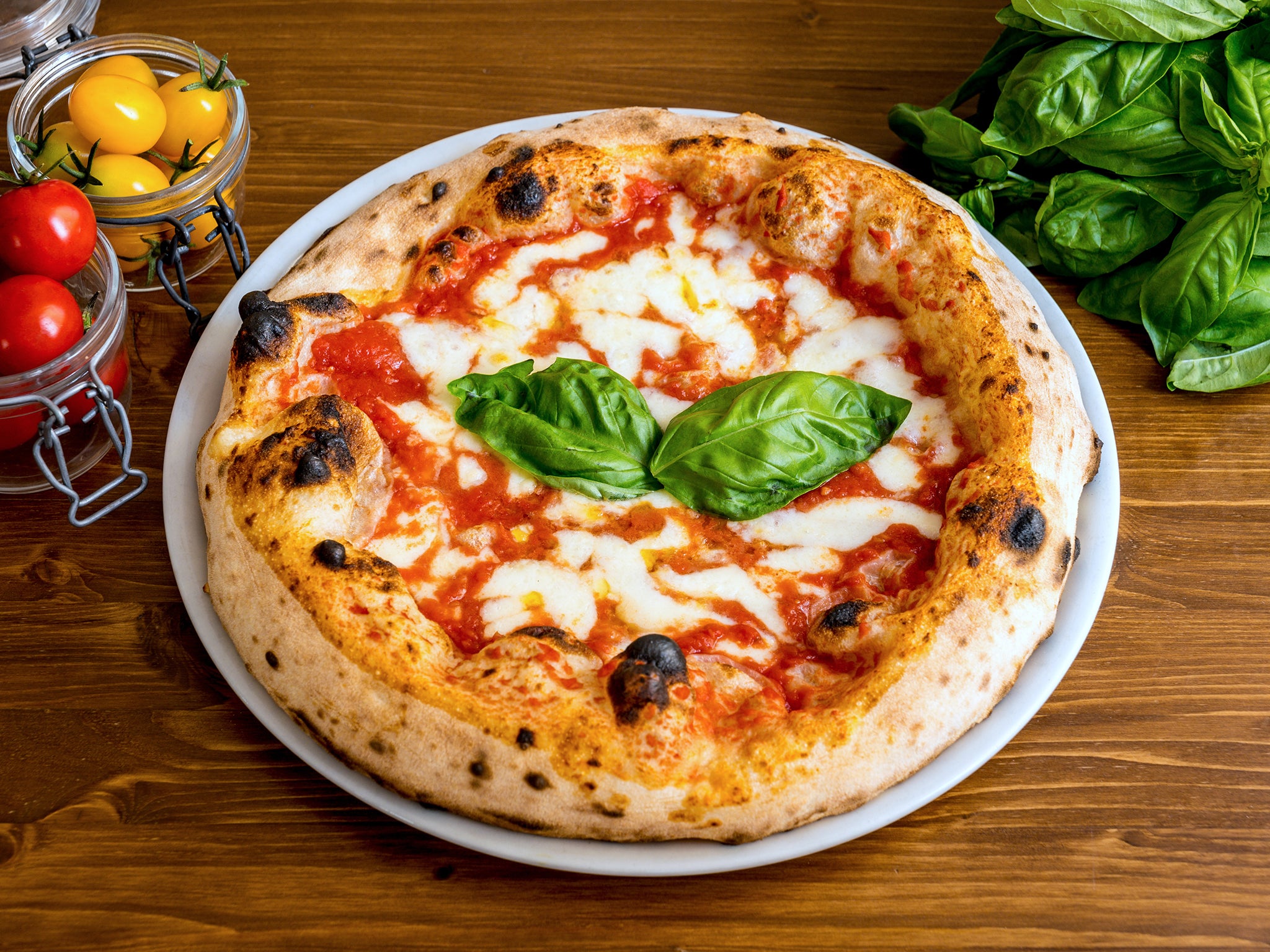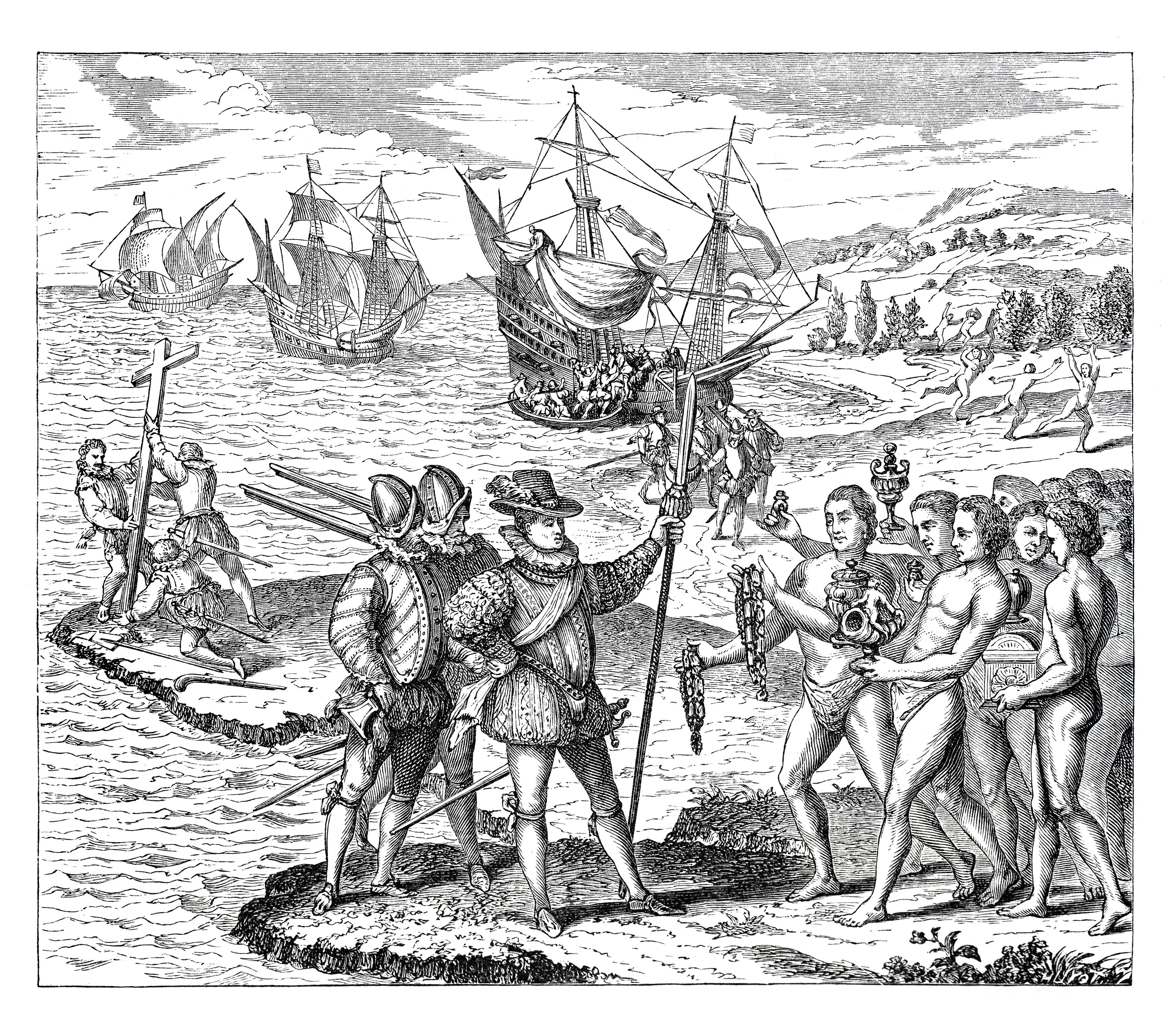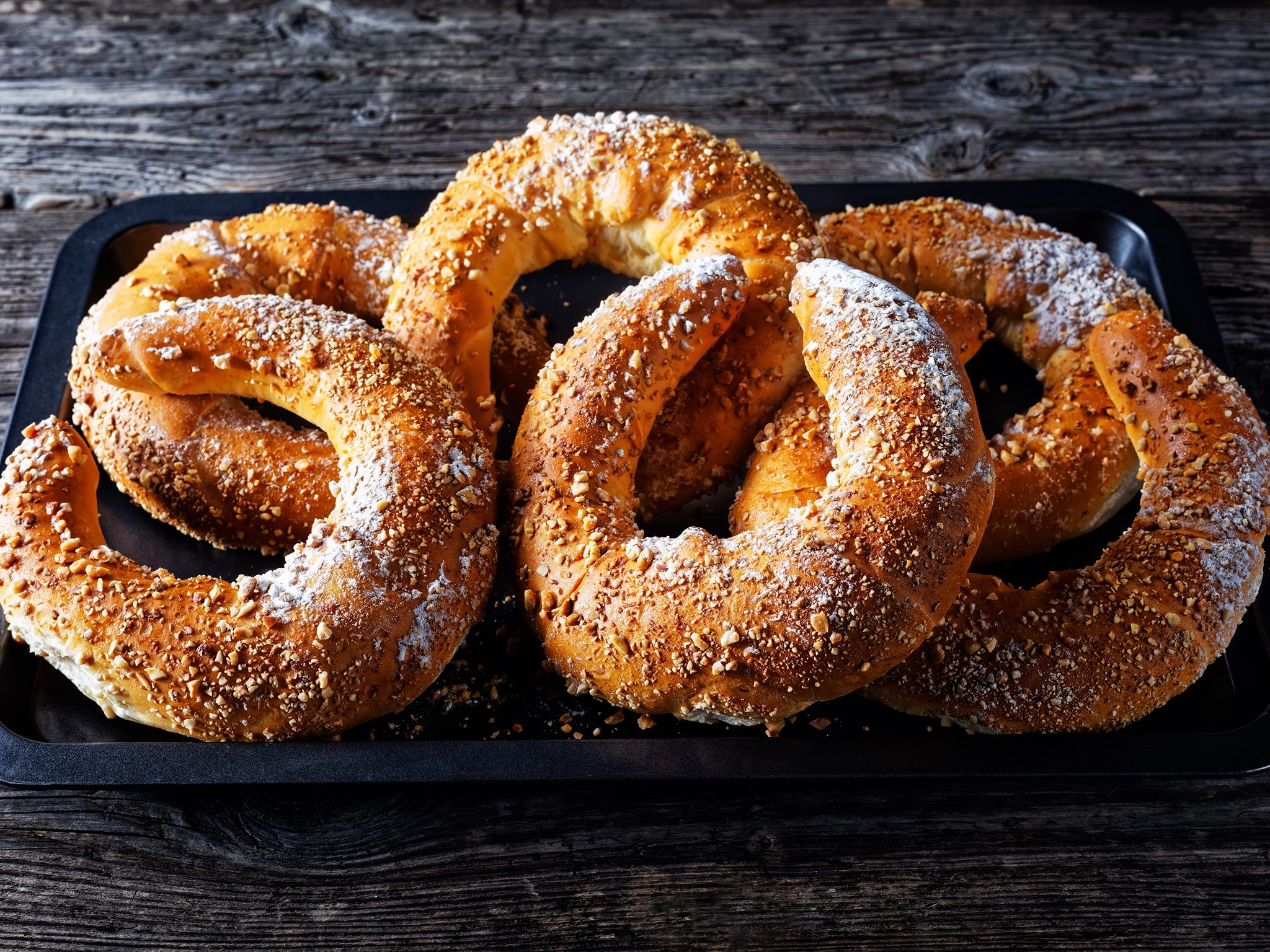Croissants aren’t French and pizza sauce isn’t Italian – the national dishes that aren’t from where you think
A food historian has kicked up controversy after claiming that there is ‘no such thing’ as Italian cuisine, sparking debate over the origins and ownership of food. But perhaps we should reconsider our ideas about so-called ‘national dishes’, suggests Hannah Twiggs


Your support helps us to tell the story
From reproductive rights to climate change to Big Tech, The Independent is on the ground when the story is developing. Whether it's investigating the financials of Elon Musk's pro-Trump PAC or producing our latest documentary, 'The A Word', which shines a light on the American women fighting for reproductive rights, we know how important it is to parse out the facts from the messaging.
At such a critical moment in US history, we need reporters on the ground. Your donation allows us to keep sending journalists to speak to both sides of the story.
The Independent is trusted by Americans across the entire political spectrum. And unlike many other quality news outlets, we choose not to lock Americans out of our reporting and analysis with paywalls. We believe quality journalism should be available to everyone, paid for by those who can afford it.
Your support makes all the difference.The news that the world has America, not Italy, to thank for the tomato base on pizza has gone down about as well as putting cream in carbonara among Italian gastro-nationalists.
In a new book called La Cucina Italiana Non Esiste (literally “Italian Cuisine Does Not Exist”), food historian Alberto Grandi claims, among other things, that Italians only discovered tomato sauce when they emigrated to the Americas, where tomatoes are native, in the 19th century.
“Pizza became red in America,” Grandi told La Repubblica newspaper. “Before that it was plain focaccia, sometimes adorned with pieces of tomato.”
It’s not the first time that Grandi, who teaches business history and the history of European integration at Parma University, has taken to the press to debunk myths about his own country’s (famously defended) cuisine. He’s made a career out of it.
In an interview with the FT last year, he said that everything from parmesan and panettone to carbonara and tiramisu weren’t fundamentally Italian. Perhaps most controversially, he claimed that parmesan produced in Wisconsin was more authentic than Italy’s because it was closer to the original cheese produced in Parma-Reggio a millennium ago. A brave man, indeed.
While the journalist, herself Italian, said hearing a food expert say that her national cuisine is “based on lies” was like being let in on an unspeakable family secret, others, naturally, were furious. Coldiretti, a powerful and somewhat frightening agricultural body in Italy, described the article as “a surreal attack on the symbolic dishes of Italian cuisine”. On his equally divisive podcast, Grandi joked that he should only leave the house “with personal security guards, like Salman Rushdie”.
You’d think, then, he might have been wary of publishing a book literally alleging that there’s no such thing as Italian food. He was quick to point out, though, that he’s never questioned the quality of Italian food or products. “The point is that we confuse identity with the roots, which we are crossbreeding,” he told La Repubblica. “We wrongly talk about identity: cuisine changes continuously.” For example, the Italians and French are the biggest consumers of sushi in Europe. And while “to taste Parmigiano-Reggiano as our grandparents ate it, we would have to go to Wisconsin”, he’s not saying that Italian Parmesan isn’t still the best.

He’s not wrong: on that or tomato sauce on pizza. Tomatoes today might seem like a central element of all European cuisines, but it’s true that they’re actually a newer ingredient, and certainly not one that’s native to Italy. The Spanish discovered them in central America in the 16th century, and brought them back to Europe as part of what’s known as the Columbian Exchange: the transfer of plants and animals between the old and new worlds. Without it, all cuisines would look, and taste, quite different today. There’d be no oranges in Florida, for example. No chillies in Asia. No coffee in Columbia. No chocolate in Switzerland. No cigarettes in France. Quelle horreur!
Tomatoes didn’t initially take off on the continent, partly because they resembled their deadly cousin the nightshade, and partly due to an early example of fake news, which circulated after some upper-class Europeans died after eating them (it was actually a result of lead poisoning from their pewter dinnerware).
The earliest traces of pizza can be found with the Egyptians, Greeks and Romans, as flatbreads, which first emerged in Italy in Naples in the 18th century. To cater to a surging population, street vendors in the city started selling flatbreads with simple toppings like lard, garlic, salt, basil and, only occasionally, cheese and fresh tomatoes. Margherita pizza was born when Queen Margherita invited a man called Raffaele Esposito to cook the dish that had become so popular among her people. Her favourite was the one with slices of tomato, basil and mozzarella: the colours of the Italian flag.
Our cuisine is envied all over the world and we even continue to make a difference today. Alberto Grandi is the flat-earther of gastronomy
While fresh tomatoes were commonly used on pizza, Grandi suggests that “pizza rossa”, or pizza with a tomato base, came about when Italians emigrated to the States en masse in the 19th century, and took advantage of the ingredients they found there. It would make sense, as the canning industry was only just taking off as a means to preserve fresh ingredients and streamline cooking. Pizza became enormously popular in the US – it was cheap, easy to make and, obviously, tasted good. So much so, Grandi suggests, that by the Second World War, there were more pizzerias in America than Italy. “When American soldiers landed in Sicily, they discovered to their surprise that pizzerias barely existed,” he wrote. According to Grandi, this is also when spaghetti alla carbonara was invented, using the bacon, cheese and powdered eggs that the American troops brought with them.
While America’s influence on the cuisine cannot be overstated, Italians aren’t too happy with their food identity being called into question yet again.
Michele Pascarella, owner of Chiswick restaurant Napoli on the Road – who has won countless awards for his pizza (eighth best in Europe) including being declared best pizzaiolo in the world last year – says it’s not about who does it first, but who does it best. “Italy is a country with an enormous food culture, passed down through generations, that doesn’t need to win any contest for who did it first in the world,” he tells me. “Our cuisine is envied all over the world and we even continue to make a difference today. Alberto Grandi is the flat-earther of gastronomy.”
This kind of culinary classicism exists in other cuisines, though rarely is it expressed so vehemently. It’s always struck me as odd, as so many of the foods we consider to be symbolic of a particular country are not actually from there.

Take croissants, for example. They’re not French; they were invented in Vienna, Austria, where moon-shaped breads date back centuries. Their history is about as indeterminate as pizza. Some say they were presented to Duke Leopold in 1227 as a Christmas treat; others that crescent-shaped pastries mimicking the moon on the Turkish flag were prepared to celebrate the defeat of the Ottoman Empire in the 1600s. Elsewhere, Parisians adapted the recipe after the first Viennese bakery closed in 1838. The most famous story is that Vienna-born Queen Marie Antoinette missed the Austrian pastry so much that she had her French bakers make them for her.
Whatever the truth, you don’t hear much whining from the French about the debated provenance of their most iconic food item.
Nor do you hear protestations from the Japanese about tempura or the Indians about vindaloo. Both have Portuguese origins. Catholic missionaries brought the Western-style cooking method of deep frying to Japan in the 16th century, while vindaloo is derived from the Portuguese “vinha de alhos”, referring to the dish’s two main ingredients, wine and garlic. The latter was originally a means for Portuguese sailors to preserve fresh ingredients, but they adapted it with spices and chillies when they got to Goa, transforming it into one of the most popular – and hottest – curries in the world.

Portugal can’t even claim its own famous piri piri seasoning, a la Nando’s, as its own. Much like tomatoes to Italy, the bird’s eye chilli used in the flavouring isn’t native to Portugal. It was discovered in the Americas in the 15th century during Portugal’s mercantile – cough, empirical – era and brought back to the colonies in Africa to cultivate before selling it on to Asia and Europe. And so the global spice trade was born. It didn’t make its way into Portugal until the late Sixties.
Marco Mendes, co-founder of MJMK Restaurants, which runs the Portuguese piri piri chicken franchise Casa do Frango, has no problem acknowledging that his country’s cuisine would be nothing without the controversial history that brought so many ingredients to Portugal. “It’s definitely to do with Portuguese mercantile history in some form or another,” he tells me. “But I believe in turn we received a ton back from the countries and the people that formed part of that mercantile exploration.”
With all that in mind, I have to wonder: does it really matter who invented tomato sauce on pizza? Or where your croissant is from? To acknowledge that one country might have had an impact on the food of another isn’t to be complicit in cultural appropriation. Point to any dish on a menu and you’ll have a hard time finding one that hasn’t got war, politics, economics, emigration or poverty to thank for its place there.
You can understand why Italians so ardently defend their identity. They only became a unified country in the 19th century, compared to their much older and more established neighbours. Italian cuisine was only nominated as a Unesco Intangible Cultural Heritage element as recently as last year.
Pascarella says it’s not about who was first, but who does it best. I’d argue that even if he misses the point; shouldn’t we be asking how we can make it better together? After all, food tastes best when it’s shared.
Join our commenting forum
Join thought-provoking conversations, follow other Independent readers and see their replies
Comments